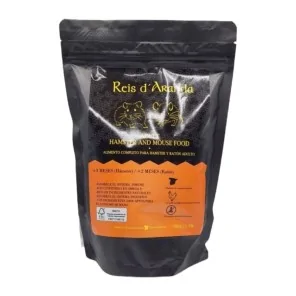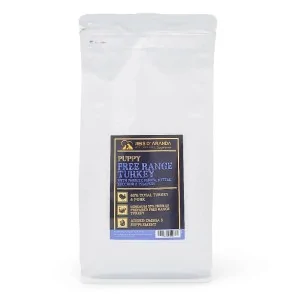The Tornjak originated from genetically homogeneous, almost extinct, indigenous shepherd dogs. These dogs have...
THE DIFFERENT WAYS OF BREEDING IN SELECTIVE BREEDING
INTRODUCTION
This article is a little more specialised and may not be of importance to some of our readers, but from our point of view knowledge is power and it is important if you like animals to know as much as possible about them to be able to broaden your knowledge and speak properly.
Within the world of pets there is a lot of misinformation, black legends and myths, among them those concerning pet breeding; this can be felt especially in the world of politics and the decisions they make about it.
When we talk about breeding animals, many people think or pass on what happens with humans, noble families in ancient times and what is seen in films and on television, ignoring the fact that blood mixing, inbreeding or the closing of bloodlines in animals has nothing to do with what happens in people.
WHAT TYPES OF BREEDING ARE THERE?
In the world of pet breeding there are different ways of breeding and all of them have a purpose that must be studied very well and not ‘just do it for the sake of it’, that is why it is so important to study well the bloodlines we have, to be clear about what we are looking for and how to look for it, otherwise we can find ourselves with easily avoidable problems:
- OUTCROSSING: Outcrossing is the crossing between two animals that are not related to each other, also known as ‘open crosses’. Open crossings are carried out when it is necessary to open a closed or very closed bloodline in order to renew the genetics or to introduce a characteristic trait into the closed bloodline. It is usually done on an ad hoc basis and is risky in a way because it can happen that these animals are not compatible with each other and give poor quality or defective offspring; in the case of rabbits it is the easiest way to obtain malocclusion, for example.
Many breeders only do open crossbreeding with animals from breeders they already know and after having studied their pedigrees. - LINEBREEDING: ‘Linebreeding’ defines breeding in an ascending or descending line, in which the same male (normally) is crossed with his daughter and granddaughter and then that great-grandson is crossed with an animal that has a minimum of 50% new blood.

(Above: Example of linebreeding in 4 generations)
- INBREEDING: ‘Inbreeding’ defines the crossing between siblings of sire and dam with 100% of genetic material in common, this could also include half siblings (50% of blood in common). This type of breeding may seem to be very criticisable, but it is used sporadically to rule out any kind of disease or genetic malformation that may be hidden in the bloodline. In order to carry out this crossing, the breeder has to know the animals he has in his hands very well and, the offspring left over from this crossing, must then be joined with an animal that has a minimum of 75% different blood (or resort to ‘outcrossing’).
- Crossbreeding: This is the crossbreeding done by the vast majority of pseudo breeders, individuals and pet farms, but did you know that there are also breeders who do it with a clear objective and with the permission of their club?
Controlled (and supervised) crossbreeding is always done with a clear objective, which can be to improve the health of a particular breed, to improve a physical trait, to create a new breed (which takes several years or even decades to achieve) or to introduce a new type of colour or colour pattern into an established breed (this happens a lot in rabbits).
For a new breed or colour pattern to be recognised it takes several years and should only be done by professionals, these animals should be presented at recognition shows and it is the club that decides whether they are considered a new breed/variety or not. It is essential that the characteristics sought are stable and occur in at least 4 different generations and that they are stable. Also, a certain number of non inbred dogs must be present in order for there to be genetic variety. This can be seen in the LUA Dalmatians, which we will talk about in their own article.
Most people who do this in a controlled way are breeders or show judges with several years of experience, ‘designer mongrels’ (dogs) or exotic colours (dogs) do not fall into this category, as the only rationale is to make money.
RESPONSIBLE INBREEDING
As we have seen it is not so easy to cross two animals, responsible inbreeding (crossing animals with blood in common between them) is fundamental and many people do not want to believe it or think it is irresponsible thinking that the animals will be weaker or have malformations. This may be true up to a certain point, but for that it must be practised in a responsible way, studying very well the bloodlines, pedigrees, knowing how to take out the percentage of blood in common (some virtual breeding applications do it), etc.
Responsible inbreeding helps to improve physical traits (it accentuates both the good and the bad), helps to control the health of a particular bloodline, brings to light colours that were lost in the family tree (rabbits) or advances a breeder's breeding work by several years, which saves him a lot of time.
It cannot be done just like that or taken lightly, as too much close breeding (this happens a lot with novice breeders who don't want any advice or unscrupulous people who don't care about anything) can lead to different health problems, weaker genetics or malformations.
CAN I BREED WELL BY ALWAYS DOING OPEN CROSSES?
Yes, it can be done (and there are people who insist on doing it all the time) but only with open crosses that same bloodline and work as a breeder will never get anywhere as the desired traits will never be fixed and we will always be back to square one.
CAN A CLOSED BLOODLINE BE HEALTHY?
Of course, besides the fact that such a bloodline is much more unlikely to develop diseases or malformations than an open cross, why? Because the breeder knows all the animals included in it inside out, knows their characteristics, can check everything first hand....
The breeder himself opens it when it is necessary and then he will resort again to linebreeding, although this way of breeding will also depend on the species of animal.
CONCLUSION
There are many ways of breeding and all of them must be done from a responsible point of view, studying very well what we have in our hands and not forcing things too much. This takes years of study and preparation, so if we are new to the world of breeding it is essential to have someone by our side who can advise us and tell us the best way to proceed. Buying books on breeds, breeding and genetics is also a great help.
Leave a comment
Log in to post comments

















